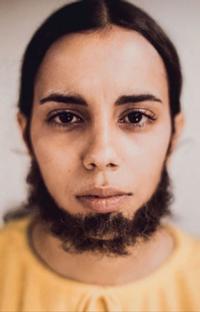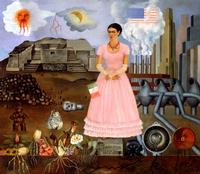Independence Day isn’t the only famous birthday this week: on July 6, 1907 in Coyoacan, which is now part of Mexico City, the revolutionary spirit Magdalena Carmen Frida Kahlo y Calderon was born in a blue house.
If you wanted to mark the day, it’s pretty easy to find fridge magnets and flower crowns, tote bags, greeting cards, and dozens of other things stamped with the exuberant image of art icon Frida Kahlo. But this being Philadelphia, a city interested in art and civic engagement, there are richer ways to celebrate and learn about Frida Kahlo, her heritage, what she created, and what she fought for.
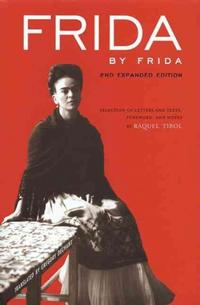
Frida Kahlo is known for paintings that explore physical and psychological pain in the body. One third of her works are self-portraits—a super classical form, but also a fascinating modern one (including selfies—even "museum art" is made for Instagram now, but I digress). If you want to explore more, Ana Mendieta, Francesca Woodman, Yayoi Kusama, and Jean-Michel Basquiat are some wonderful artists who have also used the body and self-portrait in personal and political ways.
But this week is Frida’s birthday: checkout Julie Taymor’s Academy Award-nominated biopic, Frida, starring Salma Hayek; lots of bright children’s books; or dozens of books and ebooks collecting her vivid paintings, with writings in both English and Spanish.
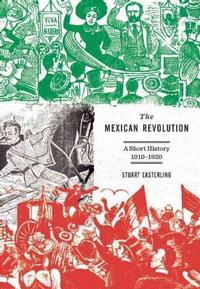
Folk art from Mexico and other countries is embedded throughout Philadelphia’s Magic Gardens, the massive South Street mosaic environment that took artist Isaiah Zagar 14 years to create. Zagar, who like Frida Kahlo is a self-taught artist, is inspired by his travels and personal connections made with folk and visionary artists in Latin America. The Magic Gardens are open to visit every day but Tuesday, and Isaiah or his wife Julia might even be there to tell you about their folk artist friends.
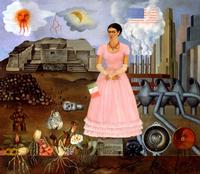
You can always visit the Philadelphia Museum of Art, too, for an intimate look at Frida Kahlo’s life, in their collection of photographs of her with friends and contemporary radicals.
Even though she was painting so many decades ago, her work speaks deeply to life today. Take, for instance, "Self Portrait Along the Boarderline between Mexico and the United States," which she painted in 1932 while homesick in Detroit. Anything look familiar there?
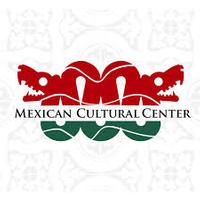
Let's get to reading about and celebrating the great humanist and activist who painted her own reality!
¡Feliz cumpleaños, Frida!
Have a question for Free Library staff? Please submit it to our Ask a Librarian page and receive a response within two business days.



